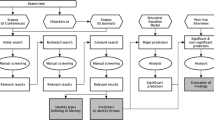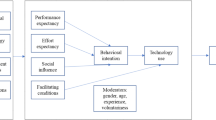Abstract
Situation awareness is certainly one of the important constructs for human factors practitioners especially human engineers. Indeed, it gives keys to allow breaking the dilemma of the human–machine system designer between the two opposite human roles in systems: a negative role as they may make errors and a positive role in that they are able to detect and recover their own errors as well as process malfunctions. We might have expected that the age of this concept would allow it to be rather mature and refined enough for efficient use. Instead, as practitioners discover its usefulness, it becomes more and more subject to controversy. Nevertheless, the construct has become popular enough to be used in everyday life, for instance in a legal dispute. Therefore, it can be caricatured with the metaphor: the half empty glass or the half full glass. This paper first recalls several strengths and weaknesses of the SA constructs: the usefulness of the concept, the numerous concurrent definitions despite the clarity of Endley’s one, the lack of measurement methods associated with some of these definitions, the lack of organisational foundations for collective SA and therefore the lack of method for designing collective SA. As an answer to the last point, this paper proposes the framework of cooperation between agents and its similitude with collective SA. Finally, on the basis of several examples, it gives indications for designing collective SA through the concept of common workspace, a construct shared with the cooperation framework.



Similar content being viewed by others
References
Barr SH, Sharda R (1997) Effectiveness of decision support systems: Development or reliance effect? Decis Support Syst 21(2):133–146
Boy GA (2013) Orchestrating human centered design. Springer, London
Boy GA, Schmitt KA (2013) Design for safety: a cognitive approach to the control and management of nuclear power plants. Ann Nucl Energy 52:125–136
Dekker SWA (2013) What is rational about killing a patient with an overdose? Enlightenment, continental philosophy and the role of the human subject in system failure. Ergonomics 54(8):679–683
Durso FT, Hackworth CA, Truit TR, Crutchfield J, Nikolic D, Manning CA (1998) Situation awareness as a predictor of performance for en route air traffic controllers. Air Traffic Control Q 6:1–20
Endsley M (1995a) Towards a theory of situation awareness in dynamic systems. Hum Factors 37(1):32–64
Endsley M (1995b) Measurement of situation awareness in dynamic systems. Hum Factors 37(2):65–84
Endsley M, Robertson M (2000) Situation awareness in aircraft maintenance teams. Int J Ind Ergon 26:301–325
Grislin E, Millot P (1999) Specifying artificial cooperative agents through a synthesis of several models of cooperation. In: Hoc JM, Millot P, Hollnagel E, Cacciabue PC (eds), Proceedings of the 7th european conference on cognitive science approach to process control CSAPC’99, 73–78. Presses Universitaires de Valenciennes, ISSN 0760 5641
Hoc JM (2014) Human-machine cooperation: a functional approach. In: Millot P (ed) Designing human machine cooperation systems. ISTE-Wiley, London, pp 273–284
Hollnagel E (2003) Prolegomenon to cognitive task design. In: Hollnagel Erik (ed) Handbook of cognitive task design. Lawrence Erlbaum Associates, London, pp 3–15
Hooey BL, Gore BF, Wickens CD, Scott-Nash N, Salud E, Foyle DC (2010) Modeling pilot situation awareness. In: Cacciabue PC, Hjälmdahl M, Luedtke A, Riccioli C (eds) Human modelling in assisted transportation. Springer, Milan, pp 207–213
Inagaki T. (2006). Design of human–machine interactions in light of domain-dependence of human-centered automation. Cogn, technol work. 8(3):161–167, ISSN:1435-5558
Inagaki T, Itoh M (2013) Theoretical framework for analysis and evaluation of human’s over-trust in and over-reliance on advanced driver assistance systems. Int J Veh Technol, Hindawy Publisher
Jones DG, Endsley MR (2004) Use of real-time probes for measuring situation awareness. Int J Aviat Psychol 14(4):343–367
Klein GA, Calderwood R (1991) Decision models: some lessons from the field. IEEE Trans Syst Man Cybern 21(5):1018–1026
Millot P (ed) (2014) Designing human machine cooperation systems. ISTE-Wiley Publisher, London
Millot P, Boy GA (2012) Human-machine cooperation: A solution for life-critical systems? Work J Prev Assess Rehabil 41:4552–4559. doi:10.3233/WOR-2012-0033-4552
Millot P, Hoc JM (1997) Human-machine cooperation: metaphor or possible reality? European conference on cognitive sciences, ECCS’97, Manchester UK, April
Millot P, Lemoine MP (1998) An attempt for generic concept toward human machine cooperation. IEEE SMC’98, San Diego, US
Millot P., Pacaux-Lemoine M.P. (2013), A common work space for a mutual enrichment of human-machine cooperation and team-situation awareness. In: 12th IFAC/IFIP/IFORS/IEA symposium analysis design and evaluation of human machine systems, Las Vegas, USA, August 11–15
Millot P, Debernard S, Vanderhaegen F (2011) Authority and cooperation between humans and machines. In: Boy G (ed) Handbook for human–machine interaction. Ashgate Publishing Ltd, Farnham
Moray N, Lee J, Muir BM (1995) Trust and Human Intervention in automated Systems. In: Hoc, Cacciabue, Hollnagel (eds) Expertise and technology cognition and human computer interaction. Lawrence Erlbaum, London
Neisser U (1976) Cognition and reality: principles and implications of cognitive psychology. Freeman, San Francisco
Pacaux MP, Debernard S, Godin A, Rajaonah B, Anceaux F, Vanderhaegen F (2011) Levels of automation and human-machine cooperation: application to human-robot interaction.In: IFAC World Conference, Milano, Italy
Pacaux-Lemoine M-P, Loiselet A (2002) A common work space to support cooperation in the cockpit of a two seater fighter aircraft. In: Blay-fornarino M, Pinnadery AM, Schmidt K, Zaraté P (eds) Cooperative systems design: a challenge of mobility age. IOS Press, Amsterdam, pp 157–172
Piaget J (1977) Études sociologiques (Sociological studies). In: 3ème (éd). Genève: Droz
Platt D, Millot P, Boy G (2014) Participatory design of a cooperative exploration mediation tool for human deep space risk mitigation.In: HCI International 2014, Creta Maris, Heraklion, Crete, Greece, June 22–27
Rajaonah B, Tricot N, Anceaux F, Millot P (2008) Role of intervening variables in driver-ACC cooperation. Int J Hum Comput Stud 66(2008):185–197
Rasmussen J (1983) Skills, rules and knowledge; signals, signs, and symbols, and other distinctions in human performance models. In: IEEE transactions on systems, man and cybernetics, SMC13, n°3, May–June
Rome F, Cabon P, Favresse A, Mollard R, Figarol S, Hasquenoph B (2006) Human factors issues of TCAS: a Simulation study. In: International conference on human–computer interaction in aeronautics (HCI-Aero 2006), Seattle, Washington, September 20–22
Salas E, Prince C, Baker PD, Shresta L (1995) Situation awareness in team performance. Hum Factors 37(1):123–126
Salmon P, Stanton N, Walker G, Baber C, Jenkins D, McMaster R, Young M (2008) What really is going on? Review of situation awareness models for individuals and teams. Theor Issues Ergon Sci 9(4):297–323
Schmidt K (1991) Cooperative Work: a conceptual framework. In: Rasmussen J, Brehmer B, Leplat J (eds) Distributed decision making: cognitive models for cooperative work. Willey, Chichester, pp 75–110
Shu Y, Furuta K (2005) An inference method of team situation awareness based on mutual awareness. Cogn Technol Work 7:272–287
Smith GF (1989) Representational effects on the solving of an unstructured decision problem. IEEE Trans Syst Man Cybern 19(5):1083–1090
Stanton NA, Stewart R, Harris D, Houghton RJ, Baber C, McMaster R, Salmon PM, Hoyle G, Walker GH, Young MS, Linsell M, Dymott R, Green D (2006) Distributed Situation Awareness in dynamic systems: theoretical development and application of an ergonomic methodology. Ergonomics 49:1288–1311
Taylor RM (1990) Situational Awareness Rating Technique (SART) : the development of a tool for aircrew systems design. Situational awareness in aerospace operations (AGARD-CP-478), NATOAGARD, Neuilly sur Seine, France, p. 3/1–3/17
Zhang Z, Polet P, Vanderhaegen F, Millot P (2004) Artificial neural network for violation analysis. Reliab Eng Syst Safety 84(1):3–18
Acknowledgments
This research is part of the French-American Project “Risk Management in Life-Critical Systems” funded by the Partner University Fund.
Author information
Authors and Affiliations
Corresponding author
Rights and permissions
About this article
Cite this article
Millot, P. Situation Awareness: Is the glass half empty or half full?. Cogn Tech Work 17, 169–177 (2015). https://doi.org/10.1007/s10111-015-0322-6
Received:
Accepted:
Published:
Issue Date:
DOI: https://doi.org/10.1007/s10111-015-0322-6




